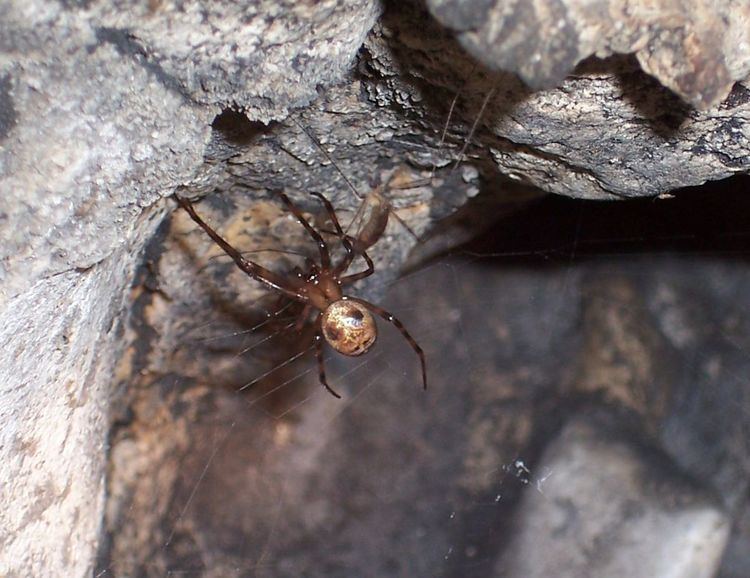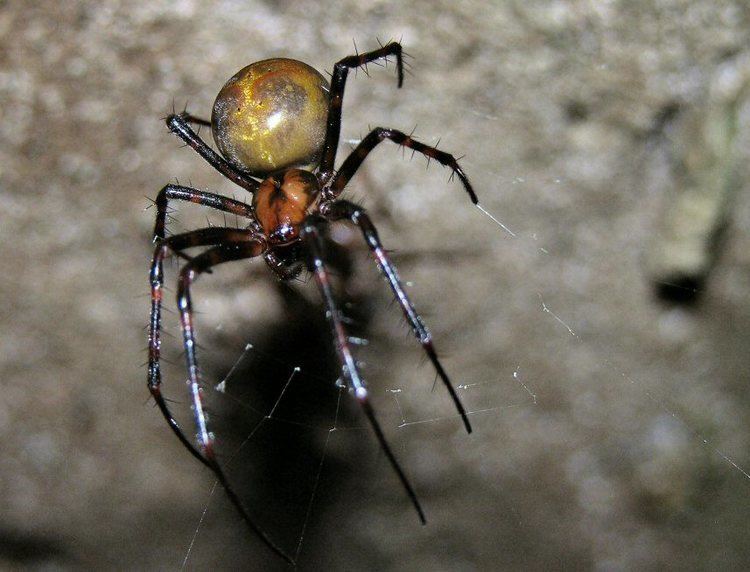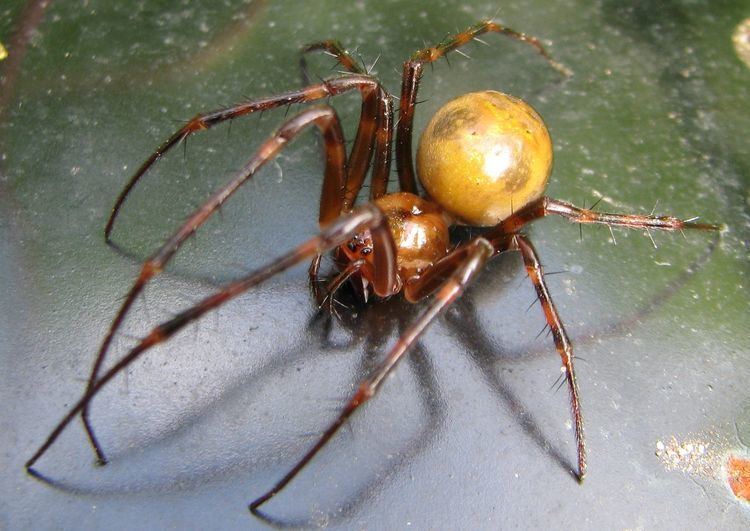Higher classification Meta | Scientific name Meta menardi Rank Species | |
 | ||
Similar Meta, Long‑jawed orb weaver, Arachnid, Meta bourneti, Metellina | ||
Creepy den of cave spiders cocoons slings handling without fear meta menardi inferion7
The European cave spider, Meta menardi, is a long-jawed orb-weaving spider (Family Tetragnathidae) it is also known as the orbweaving cave spider, the cave orbweaver and simply the cave spider (in context).
Contents
- Creepy den of cave spiders cocoons slings handling without fear meta menardi inferion7
- Handling big creepy cave spider meta menardi inferion7
- Habitat
- Morphology
- Life cycle
- Media mistakes
- References

Handling big creepy cave spider meta menardi inferion7
Habitat

They have a natural range extending from Scandinavia to North Africa and from Europe to Korea, there are also transplanted populations as far apart as Japan and Madagascar.

The adult spiders are photophobic and live in places free from light, frequently in caves and tunnels, though they can sometimes be seen outside of caves and mines as they will emerge around dusk to hunt, often using a single silk lasso line and swinging down upon their prey. They are often found in areas that are frequented by bats. The spiders are most often observed in railway tunnels and mines since these are more likely to be visited by humans. The young spiders are, after several instars, (and in contrast to the adults) strongly attracted to light—probably an evolutionary adaptation which ensures the spread of the species to new areas (see Life cycle for further details).
Morphology

They are shiny satin black to reddish brown in colour, often having a different coloured rear body which varies from black, brown or even olive green and are one of the largest spiders found in the United Kingdom with adults reaching roughly 5 cm legspan and 15 mm body length. However, the giant house spider, cardinal spider and the raft spider are larger. It is widespread and locally abundant, although rarely noticed due to its habits. They are neither endangered nor protected in the UK.

Meta menardi closely resembles Meta bourneti, which sports a fainter mark on its abdomen and no rings on its legs.
The ecology of the two species is very similar. On the other hand, the two species seems to exhibit different tolerance to the microclimatic variations within the cave, which emerged as the main factors determining the differentiation of their niche.
Cave spiders feed on smaller invertebrates, most frequently myriapods and slugs.
The European cave spider is not dangerous to humans and although (in common with nearly all spiders) they have venom, its effect on large mammals is negligible. They are unlikely to bite if carefully handled but if sufficiently provoked they are capable of inflicting an unpleasant "nip". They are non-aggressive and generally slow moving and are regarded (by arachnophiles) as "gentle giants".
Life cycle
After mating, female produce a drop-shaped Egg sacs (cocoon).
Egg sacs are tear shaped white pendants (sometimes with a slightly yellow centre) usually hanging from the roof of the habitat by a silk thread approximately 20 mm long. Egg sacs are usually laid in the vicinity of the cave entrance, where the air flow velocity ranges between 0.3 and 0.6 m/s.
The cocoon (2–3 cm in radius) contains an average of 200/300 eggs and is laid in the nearby of the cave entrance at the end of the summer. After hatching, the spiderlings remain in the cocoon until the first molt, feeding on the yolk. They leave the cocoon in spring, move towards the cave entrance and disperse via ballooning outside the cave.
Media mistakes
A media frenzy was caused when British Telecom engineers working in the grounds of Windsor Castle discovered a colony living in conduits and manholes. These were incorrectly described as swarms of aggressive spiders, up to 9 cm in size, which a leading entomologist believed were venomous. The initial incident was widely reported but when the species was properly identified the matter received little publicity.
